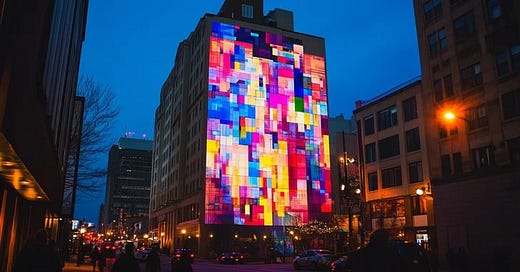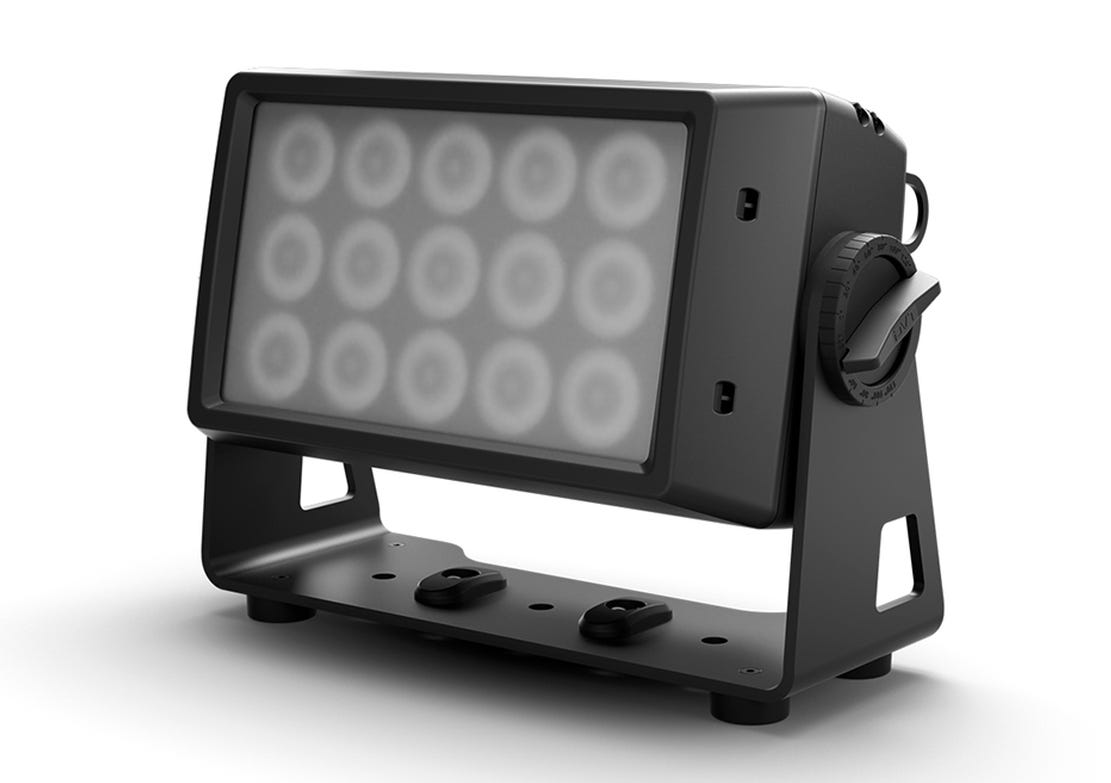How to Design a Color-Changing Building Illumination
How to highlight the aesthetic qualities of architecture through dynamic color changes and the creation of unique illuminations.
Architectural lighting is not just about functionality; it’s also a powerful tool to highlight the aesthetic qualities of architecture. More and more investors and architects are opting for RGBW systems, which enable dynamic color changes and the creation of unique illuminations.
This article is dedicated to non-technical people, real-estate managers, and venue operators to get some basic know-how when planning to update their existing buildings and make them colorful.
By combining the three primary colors (red, green, blue) with an additional white light source, RGBW systems offer a broad spectrum of colors and the ability to achieve pure white light.
But how do you choose the right system and design lighting that will operate flawlessly for many years?
What is RGBW Technology?
RGBW technology involves the use of LED diodes in four colors: red, green, blue, and white. Traditional RGB systems mix colors to create a wide range of hues but struggle to produce pure, natural white. Adding a white diode not only enables neutral white light but also allows for more precise color mixing. This makes RGBW systems versatile solutions for both decorative and functional lighting.
Key Advantages of RGBW Lighting
Design Flexibility: Create both static and dynamic lighting effects.
Energy Efficiency: LED technology consumes significantly less energy than traditional light sources.
Durability: Professional RGBW fixtures can operate reliably for many years.
Integration with Control Systems: Enable programming of lighting scenes, synchronization with music, or management via mobile apps.
What Type of Fixtures Should You Choose?
When designing RGBW lighting, it’s important to consider the type of fixtures and their intended use. Here are the most commonly used types:
Floodlights:
Ideal for illuminating large surfaces such as building facades or bridges.
Provide uniform lighting and vibrant colors.
Wall Washers:
Used for vertical surfaces and architectural details.
Create smooth color transitions or uniform bands of light.
LED Spots:
Perfect for highlighting specific architectural elements like sculptures or logos.
LED Strips:
Used to subtly emphasize building shapes, such as cornices or edges.
What to Consider When Choosing an RGBW System?
Choosing the right RGBW system is essential for achieving durable and visually striking lighting. It’s important to remember that these systems are expected to work flawlessly for many years, so it’s not advisable to opt for the cheapest options. Low-cost solutions often require servicing after just a few months of use. While repairs during the warranty period are covered by the manufacturer, after the warranty ends, the costs fall on the user. Therefore, it’s worth investing in fixtures from reputable manufacturers that are made of high-quality materials and designed to withstand harsh weather conditions.
Important Considerations:
Durability: Fixtures should be resistant to rain, snow, wind, and UV radiation (IP65 rating or higher).
Light Quality: High-grade LED diodes ensure better color rendering and longer lifespan.
Control Capabilities: Systems compatible with protocols such as DMX, DALI, or RDM allow for flexible lighting management.
Service Availability: Reputable manufacturers often provide technical support even after the warranty period ends.
Color Consistency: Many systems vary in the shades of the same colors, so choosing high-quality fixtures ensures uniformity.
Applications of RGBW Lighting
Highlighting the aesthetics of buildings and creating unique lighting effects during special events, such as national holidays or city celebrations.
Atmosphere Creation:
Enhancing the character of hotels, shopping centers, or restaurants with ambient lighting.
Interactive Installations:
Systems that respond to movement, such as pedestrians, or change color based on weather conditions.
Landscape Lighting:
Illuminating parks, urban squares, or gardens.
So what should I know?
RGBW lighting is an investment that enhances the aesthetic appeal of a building, increases its prestige, and captures attention. A professionally designed system, made with high-quality components, ensures years of reliable operation. Therefore, choosing high-quality equipment is a long-term investment that provides both cost savings and lasting visual effects.
By selecting an RGBW lighting system, you can transform any building into a spectacular architectural landmark that delights both residents and visitors alike.
If you’re an architect, property manager, or marketer looking to revitalize a building and need advice in this area, contact me today. Let’s bring your vision to life!
You may also want to read:
Mappings: Transforming Spaces with projection mapping
How to create truly immersive multimedia spaces and buildings
ARAM becomes an official Panasonic Partner in Projection and Immersive Experiences
Modern LED Screen Solutions for Trade Show Booths
How to design an Immersive Exhibition?
Forward this to your friend if you find this interesting!








